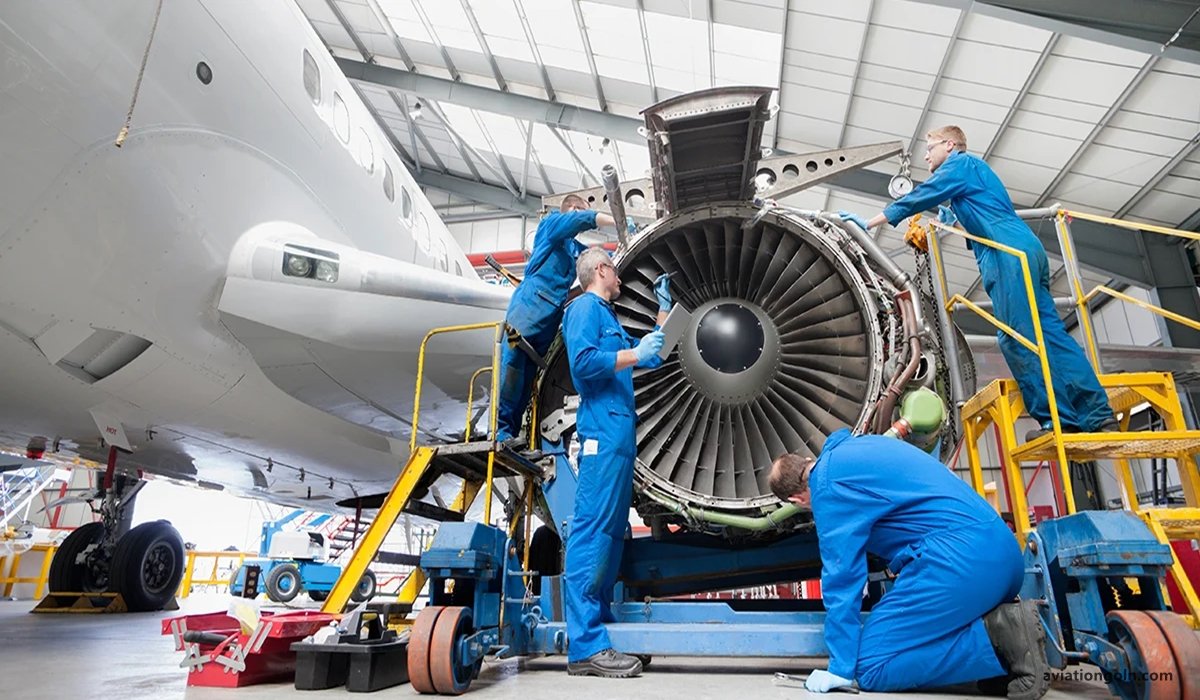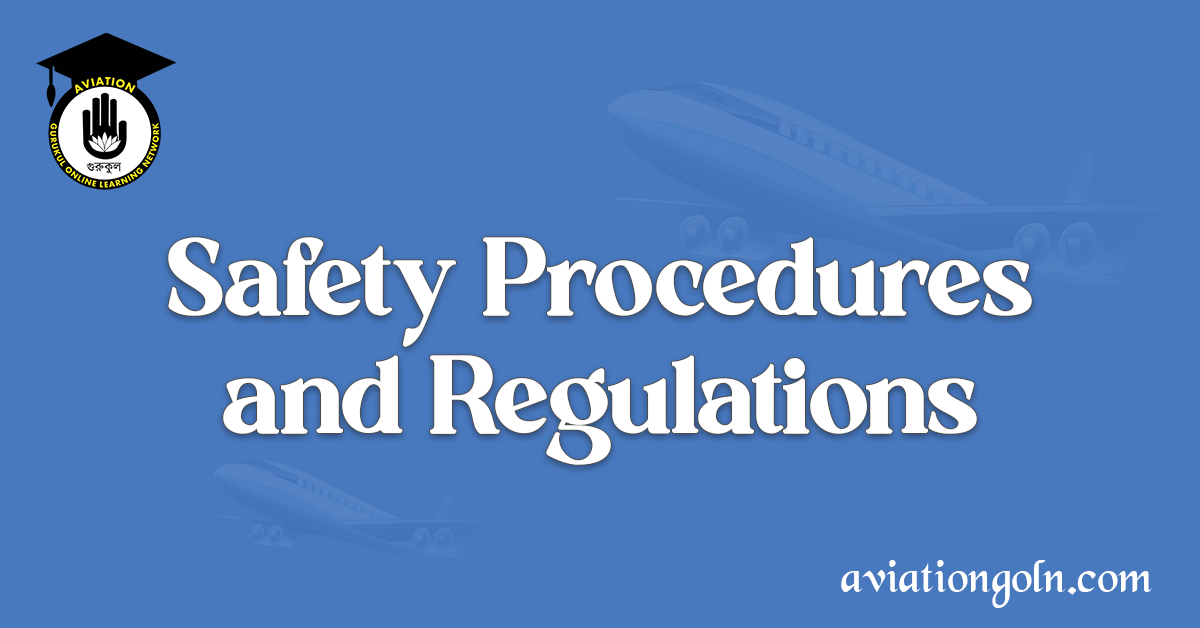Safety Procedures and Regulations in Aircraft Maintenance and Safety: Aircraft safety is paramount. The aviation industry, with its complex and interdependent systems, places immense emphasis on ensuring that every flight is undertaken without a glitch. Central to this objective is aircraft maintenance and the meticulous safety procedures and regulations that govern it. Let’s embark on a journey into the intricate world of maintenance safety.
Safety Procedures and Regulations in Aircraft Maintenance and Safety
1. The Importance of Aircraft Maintenance Safety
Aircraft maintenance isn’t just about keeping an aircraft in operation; it’s about ensuring that every component functions flawlessly. A minor oversight can lead to catastrophic results, making rigorous safety protocols indispensable.

2. Regulatory Bodies and Standards
Several organizations set and oversee aviation maintenance standards:
2.1. International Civil Aviation Organization (ICAO)
A specialized UN agency, ICAO establishes global standards and regulations, ensuring aviation safety, security, and efficiency.
2.2. Federal Aviation Administration (FAA)
The FAA oversees civil aviation within the United States, setting standards for aircraft maintenance, operations, and training.
2.3. European Union Aviation Safety Agency (EASA)
EASA manages aviation safety in the European Union, certifying aircraft and components and approving organizations involved in design, manufacture, and maintenance.

3. Key Safety Procedures in Aircraft Maintenance
3.1. Routine and Preventative Maintenance
Routine inspections are carried out at various intervals, ranging from daily checks to detailed inspections every few years.
3.2. Fault Reporting and Logging
Any discrepancies or faults discovered during operations are documented and addressed before the next flight.

3.3. Component Lifecycle Tracking
Critical components have defined lifecycles. They must be replaced after a certain number of flight hours, cycles, or calendar duration.
3.4. Special Inspections
After incidents like hard landings or encounters with severe turbulence, special inspections are mandated to ensure no damage compromises safety.

4. Safety Protocols for Maintenance Personnel
4.1. Proper Training
Technicians undergo rigorous training and certification processes, ensuring they’re equipped with the latest knowledge and best practices.
4.2. Use of Personal Protective Equipment (PPE)
From ear protection to safety harnesses, PPE is vital in safeguarding technicians from potential hazards.
4.3. Tool Control Procedures
Tools are systematically logged, ensuring none are left behind in an aircraft, which could lead to dangerous situations.
4.4. Two-Person Integrity Checks
Critical maintenance tasks often require two technicians to verify the completion and correctness of the task.

5. The Role of Technology
5.1. Maintenance Management Systems
Digital systems help track maintenance schedules, component lifecycles, and fault reports, ensuring timely and accurate interventions.
5.2. Non-Destructive Testing (NDT)
Techniques like ultrasound, radiography, and eddy currents allow technicians to detect faults without dismantling the entire component.
5.3. Augmented Reality (AR)
AR can guide technicians through complex repairs, overlaying digital instructions onto real-world components.

6. Safety Oversight and Audits
Routine audits, both internal and external, ensure maintenance operations adhere to safety standards. Regulatory bodies may also conduct unannounced inspections.

7. Importance of Human Factors
Recognizing that human error can be a significant factor in accidents, the industry emphasizes the study of human factors. It delves into issues like fatigue, stress, communication, and teamwork, seeking to mitigate the risks these can pose.

8. Reporting and Whistleblower Protections
Encouraging a culture of open reporting without fear of retribution ensures potential safety concerns are raised and addressed. Many regulatory bodies provide whistleblower protections to ensure employees can report concerns without fear.

9. Challenges and the Path Forward
The aviation industry is dynamic, with new aircraft models, technologies, and challenges constantly emerging.
9.1. Evolving Technologies
As aircraft integrate newer technologies, maintenance procedures must evolve in tandem, requiring continuous training and upskilling.
9.2. Aging Aircraft
Older aircraft might require more frequent maintenance, and finding parts or expertise can be challenging.
9.3. Global Standards Harmonization
While ICAO provides global standards, nuances exist between regions. Efforts are ongoing to harmonize these standards, ensuring consistency.

Safety in aircraft maintenance is a complex, ever-evolving field that holds the lives of air travelers in its hands. It’s a blend of rigorous training, meticulous procedures, advanced technologies, and an unwavering commitment to perfection. As passengers, the seamless nature of our flights often blinds us to this intricate dance behind the scenes. But in every shadow of a hangar, under the arc of a mechanic’s torch, or in the hushed tones of an inspector’s checklist, lies the unyielding promise of safety. It’s this promise that keeps the skies friendly and our journeys uneventful, propelling the aviation industry into a brighter, safer future.
Read more:
